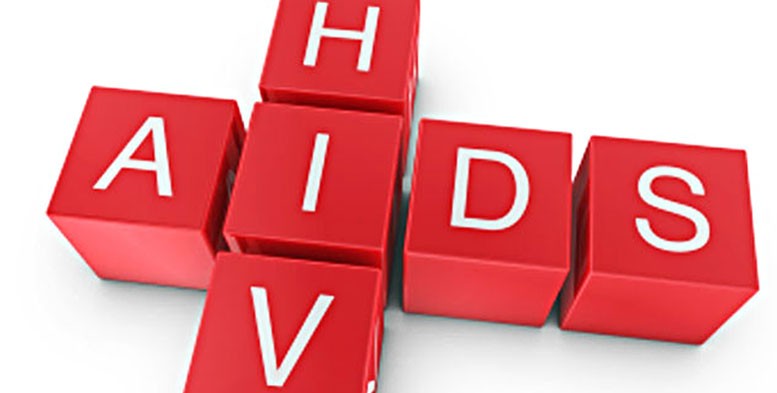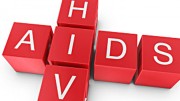HIV Prevention is key to lowering the alarming number of youth, others, with HIV/AIDS
By: Eric Brus*
HIV Surveillance Data Show Reduced HIV Diagnoses in Most Groups
In its most recent HIV surveillance report, the U.S. Centers for Disease Control (CDC) summarizes data on HIV/AIDS in the U.S. and six dependent areas during 2015, as well as trends during the period from 2010 through 2014. The 114-page publication provides detailed breakdowns of new HIV diagnoses, HIV/AIDS prevalence, deaths, and survival rates by race/ethnicity, gender, risk category, and age. Regional data are also provided for individual states, as well as Metropolitan Statistical Areas.
In the report, CDC identifies a number of key trends for 2010-2014, including the following:
- The annual numbers and rates of HIV diagnoses in the U.S. decreased overall and among both women and men.
- During 2015, seven out of ten (70%) of all new HIV diagnoses occurred among gay, bisexual, and other men who have sex with men, and nearly one-quarter (24%) were attributed to heterosexual contact.
- HIV diagnosis rates decreased among African Americans, Latinos, and Whites.
- HIV diagnosis rates increased among persons 25 to 29 years old, remained stable among those 20 to 24 years old, and decreased among other age groups.
- The annual number of diagnoses attributed to male-to-male sexual contact remained stable, while the number attributed to heterosexual contact or injection drug use decreased.
- The annual number and rate of deaths of persons with diagnosed HIV decreased.
- HIV prevalence in the U.S. reached an all-time high; at the end of 2014, more than 955,000 people were living with diagnosed HIV infection.
The report’s Commentary section (pages 5 through 11) provides a more extensive summary and analysis of the surveillance data, which are published in nearly 30 data tables that make up the bulk of the report. According to CDC: “While trends in HIV diagnoses are influenced by testing rates, and may not always reflect trends in actual HIV transmission, the declines seen in this report suggest that national HIV prevention efforts are paying off, while signaling the urgent need for intensified prevention among young people and men who have sex with men. We are confident that, working together with national, state, and local partners, we can continue to make new progress.”
2016 NHAS Reports Track Progress Toward 2020 Goals
On World AIDS Day, the Obama White House published the 2016 Progress Report for the National HIV/AIDS Strategy Updated to 2020 (NHAS). The report summarizes recent advances and challenges in achieving the NHAS four main goals: 1) reducing new HIV infections; 2) increasing access to care and improve health outcomes among people living with HIV; 3) reducing HIV-related health disparities and health inequities; and 4) achieving a more coordinated national response.
The White House released two additional documents to accompany the progress report. An NHAS Milestones infographic summarizes major developments in HIV science and policy, as well as trends in domestic HIV/AIDS funding, since the launch of NHAS in 2010. The NHAS Indicator Supplement examines trends in a group of indicators chosen to track progress toward specific objectives delineated in the NHAS. Data in the Indicator Supplement show improvements in most HIV indicators since 2010. In particular:
- new HIV diagnoses decreased by 7% from 2010 to 2013;
- the HIV/AIDS death rate dropped by about 30%;
- continuum of care measures – including knowledge of HIV status, linkage to care, and viral suppression – all increased;
- disparities in the rates of HIV diagnoses among Black females decreased; and
- rates of viral suppression increased among youth, persons who inject drugs, and transgender women.
The report notes that the most recent year’s targets have not been met for five indicators. Specifically:
- although U.S. HIV diagnoses dropped overall, progress has stalled in reducing the disproportionally high HIV diagnosis rates in the Southern U.S;
- homelessness among persons with HIV has continued to increase;
- among gay and bisexual men, three indicators that measure disparities in new diagnoses (overall and specifically among young Black gay and bisexual men) and HIV-risk behaviors showed increases, rather than the targeted decreases from baseline levels.
“These data show that considerable progress is being made, but that all groups have not benefited equally,” according to the report. “We still have more progress to make in order to achieve the goals of the National HIV/AIDS Strategy by 2020.”
To further monitor advances in HIV prevention, care, and the quality of life, the NHAS has added three new developmental indicators:
- increasing to 90% the percentage of transgender women in HIV medical care who are virally suppressed;
- decreasing HIV stigma among people living with HIV by 25%; and
- increasing the number of people prescribed PrEP by 500%.
Amy Lansky, director of the White House Office of National AIDS Policy (ONAP) announced the new PrEP indicator during a plenary session at the National HIV PrEP Summit in San Francisco early this month. In her remarks, Lansky described the key role that PrEP is expected to play in meeting the NHAS goal of reducing new HIV infections. The new PrEP indicator tracks the number of U.S. adults prescribed PrEP and sets a target to increase that number from the baseline of 9,375 in 2014 to at least 56,250 by 2020. Lansky noted that efforts to reach the PrEP target are already underway, including commitments from several agencies to support a variety of PrEP activities in the NHAS Federal Action Plan.
MAP Report Reviews U.S. HIV Criminalization Laws
LGBT Policy Spotlight: HIV Criminalization Laws examines the basis for U.S. HIV criminalization laws and their impacts on the criminal justice system and public health. The report was produced by the Movement Advancement Project (MAP), a research and communication organization advocating for LGBT equality. According to the report, 38 states have HIV-specific criminal laws or broader criminal laws related to the perceived or potential exposure or transmission of HIV. In another six states that lack HIV-specific laws, people living with HIV have nevertheless been prosecuted under state criminal law for crimes, such as aggravated assault, related to their HIV status. In the remaining six states and the District of Columbia, there are no HIV-specific criminal laws and there have been no known HIV-related prosecutions.
“These laws perpetuate dangerous stigma and misinformation about the disease and people living with HIV, create a strong disincentive for individuals to find out their HIV status, and disproportionately target LGBT people,” according to MAP. Some laws criminalize behaviors, such as spitting, that have no risk of HIV transmission. They also do not consider the fact that current prevention methods, including condom use, HIV treatment as prevention, and PrEP can dramatically reduce the risk of HIV transmission.
Like several other agencies and organizations – including the U.S. Department of Justice and UNAIDS – MAP is calling for an overhaul of HIV criminalization laws. In particular, MAP recommends that “states should repeal, reform, and/or modernize all laws that criminalize the transmission of HIV and other diseases. Revisions should be guided by the best available science and medical evidence, and they should uphold principles of legal fairness, taking into consideration components such as intent, proportionality, evidentiary obstacles, and appropriate defenses in light of current science.”
OTHER NEWS REPORTS AND MATERIALS
HHS Report Highlights Efforts to Advance LGBT Health and Well-Being
The U.S. Department of Health and Human Services (HHS) recently published Advancing LGBT Health and Well-Being – the sixth annual report of the agency’s Lesbian, Gay, Bisexual, and Transgender (LGBT) Policy Coordinating Committee. The report spotlights three important developments during 2016:
- the publication of a final rule implementing the non-discrimination provision of the Affordable Care Act that protects against discrimination on the basis of gender identity and sex stereotyping;
- the creation of a new position for a Senior Advisor for LGBT Health within the Office of the Assistant Secretary for Health (OASH); and,
- the official designation by the National Institutes of Health of sexual and gender minorities as a health disparity population for research.
The 16-page report also provides detailed information on recent HHS activities in three areas: 1) prohibiting discrimination against LGBT individuals and families and thereby improving LGBT access to healthcare; 2) improving data collection and supporting research on LGBT communities; and 3) building the knowledge base, improving cultural competency, and expanding capacity to serve LGBT communities. The report also includes a discussion of several recent initiatives to address the continuing high rates of HIV infection among Black gay and bisexual men and transgender women.
Video Series on AIDS Cure Research from amfAR
The Foundation for AIDS Research (amfAR) recently launched a series of videos to raise awareness of HIV cure research and its Countdown to a Cure for AIDS initiative. Launched in 2014, the Countdown has the goal of developing the scientific basis, by 2020, of treatments to cure HIV infection in persons living with the virus. Toward this end, amfAR is making strategic investments in cure-focused HIV research totaling $100 million over the next five years. This research will study approaches to clear HIV reservoirs – pockets of virus that remain even after a person has reached an undetectable viral load as a result of HIV treatment. The first video in the series provides background on viral reservoirs and the Countdown initiative. The remaining videos discuss four key research questions summarized with the acronym CURE – Chart, Understand, Record, and Eliminate. These questions are: 1) Where in the body, and in which types of cells, are HIV viral reservoirs located? 2) How are these pockets of virus formed and sustained? 3) Exactly how much virus remains in these reservoirs? and 4) How can we safely eliminate the virus?
New Book on HIV and Aging
The medical publisher Karger has recently published a new book, HIV and Aging, in its Interdiscipinary Topics in Gerontology and Geriatrics series. The book’s theme is “understanding the evolving complexities of HIV in older adults.” According to the publisher, the book “focuses on HIV and aging in the context of ageism with regard to prevention, treatment guidelines, funding, and the engagement of communities and health and social service organizations. The lack of perceived HIV risk in late adulthood among older people themselves, as well as on the part of providers and society in general, has led to a lack of investment in education, testing, and programmatic responses. Ageism perpetuates the invisibility of older adults and, in turn, renders current medical and social service systems unprepared to respond to patients’ needs. While ageism may lead to some advantages – discounts for services, for example – it is the negative aspects that must be addressed when determining the appropriate community-level response to the epidemic.”
*Eric Brus is the Director of Health Information at AIDS Action Committee. This report is produced by the Health Library of the AIDS Action Committee in collaboration with the New England AIDS Education and Training Center Minority AIDS Initiative Project. The full version is available online.







